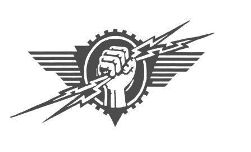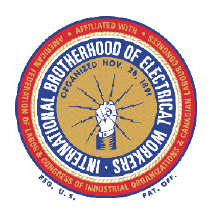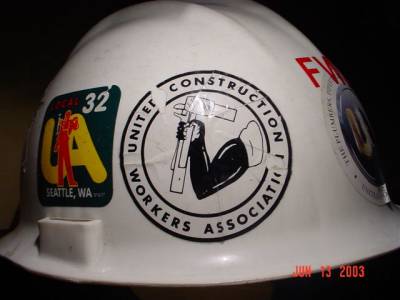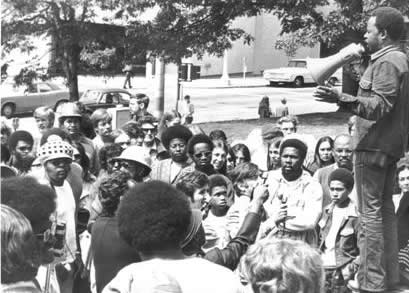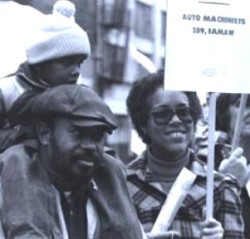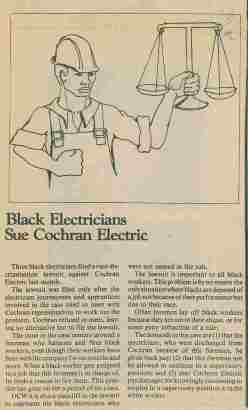At the Kent headquarters of The International Brotherhood of Electrical Workers (IBEW) Local 46, workers meet the first Thursday of every month to discuss the problems racial minorities and women face in the electrical industry. Men and women, black, Asian, Hispanic and white of all ages and each a member of IBEW Local 46, plan ways to strengthen and diversify the union so that it represents the complexion of the community, and to achieve equality with the union local’s white male majority in employment rates and union leadership. The purpose of this essay is to map out the history and political context of Local 46’s Electrical Workers Minority Caucus (EWMC) - to tell the story of specially oppressed workers, their union, and the advanced political leadership role they play.
Background
Local 46’s EWMC is part of a massive electrical industry labor force represented by the International Brotherhood of Electrical Workers, an organization representing and defending approximately 750,000union electrical workers across the United States , Canada, and Puerto Rico . Each region in which the IBEW now operates is designated with a local number. IBEW Local 46 includes all organized construction electricians in King, Kitsap, Jefferson and ClallamCounties .
The history of IBEW Local 46, and the region’s labor movement in general, is complicated, with elements of reaction and racism at one extreme and inclusiveness and revolutionary ideals at the other. For instance, the Industrial Workers of the World (IWW) focused much of its energy on the Northwest. These revolutionary syndicalists stood for the organization of all workers into one big union, regardless of race, gender or origin. The IWW fought for a better life for all working people. Their influence has been wide and lasting. Today the IBEW Local 46 website includes passages on the IWW, their history and tactics, even though Local 46’s craft unionism stands in marked contrast to the industrial unionism advocated by the Wobblies. And if Seattle electrical workers were to walk off a job right now in protest of bad working conditions, the action would be referred to as a “wobble.”
Unfortunately, at least as influential as radicalism has been the legacy of racism inside the American Federation of Labor (AFL), an organization that is supposed to protect and improve worker’s situations. The AFL’s precursor in Seattle, the Knights of Labor, formed in the aftermath of an anti-Chinese riot in 1886 which drove most of the city’s Asian population out of the city.1 The IBEW is an AFL craft union where members are organized based on their skill instead of their belonging to an industry. An industrial union of the construction industry, which does not exist in this country, would include carpenters, iron workers, electricians, pipe-fitters, material handlers, truck drivers and even non-management office workers. Under the craft union system, the different trades in an industry are divided by job description rather than workplace. In this environment, nepotism dominates as the vehicle for trade recruitment, and typically reinforces racial and gender exclusion.
IBEW Local 46 is often referred to inside Seattle ’s construction industry as an “FBI” union, indicating a relationship of “father, brother or in-law” is useful in attaining membership. These nepotistic ties are not limited to members inside the union, but across the industry. For instance, Rick Zenner, once the president of Local 46’s Wiremen’s Unit, is now a superintendent at McKinstry’s electrical division, and more than one of his children currently serve apprenticeships. Owners of electrical contracting companies are often able to introduce their family members into the union as electricians, creating personal links between workers and owners that obscure the issue of class and weaken the union’s ability to advance the quality of life of its members. This closed system of recruitment, coupled with the desirability of these high wage jobs, has led to the formation of minority groups over the years whose goal has been to integrate the construction industry. This is the legacy of the EWMC.
Race and Gender in the Northwest Working Class
The EWMC always has been and will probably continue to be a largely black organization. Membership is open to anyone belonging to Local 46 and is actively encouraged, but despite their small numbers, black people have always played a disproportionately strong political role the labor movement, from fighting slavery through the Civil War and Reconstruction, to the rise of the CIO and in groups like the EWMC in the modern labor movement. This is a function of American history.
While not subjected to the particularly vicious oppression that black men experience in everyday life, and not a minority of the population, white women have been historically discriminated against in the electrical industry in patterns that parallel other oppressed groups. Women electricians are stereotyped in ludicrous ways. Male electricians of a variety of political persuasions routinely state that women only join the trade to find a husband. In fact, women have sought entry into the trades for the same reasons as all workers- high wages and good benefits. Janet Lewis the first white woman to join Local 46 as an electrical apprentice remembers her early experiences fighting for equal training: “In 1974 we were doing a lot of high-rises and you could get pigeon-holed doing nothing but lighting for a year and on top of that you were the last hired and first fired…It was hard because at a certain point it wasn’t the contractor who was out to get you or your union, but your actual brothers, the people you worked with hated you.”2
Women also deal with stereotypes that on the surface seem true. When a worker has black skin, it is their skin that is different, where as a woman electrician can appear to be physically inferior to a male electrician based on her size, build and strength. In fact tools do most of the actual work an electrician produces, especially power tools which are required to be provided by the contractor by contract.3Electrical construction does put physical demands on a worker, but it should be the worker’s decision whether or not they choose to be in a difficult trade. The mission statement of the IBEW declares its purpose to pursue an ever increasing quality of life for the membership. Regardless of gender, the idea is not to overwork oneself.
Black women in the trades experience double discrimination as well as the isolation of not feeling completely represented by political groups dominated by black men or white women. Beverly Sims, one of the first black people in Local 46 and first women to complete Local 46’s electrical apprenticeship notes that while white women did organize to defend themselves when they first got into the trade, “They were really clandestine. It wasn’t about saying ‘We have a right to be here!’ They never waged any campaigns. It was more of a support group.” And, “Black Men were sexist too. I’m not going to lie. All men are sexist. They have to be to live in this society.”4
The path into IBEW Local 46 for black men was different than for women and most other racial minorities. By 1969, of the 2,700 members of the local only two were non-white. The glaringly white presence of the non-integrated electricians working on construction sites in the central district, like Medgar Evers Pool, provoked a demonstration by the Central Contractors Association (CCA)- an organization of black and Hispanic contractors.5 Black male trades people, who were barred by the union leadership from joining Seattle’s trade unions, instead worked as small non-union contractors. The economic opportunity and working conditions experienced by these “contractors” was worse than that of a union construction worker and should not be confused with the position of white construction company owners. Rather, the goal of CCA demonstrations was to gain entry into the unions and attain positions as workers on union job sites. The CCA employed militant tactics, such as occupations, to shut down job sites and was successful in spite of continuing hostility from the unions. Demonstrations were held by the CCA at construction sites across the city, especially at government buildings being erected with tax dollars like the University of Washington, Seattle Central Community College and Seatac Airport .6
In 1969 these demonstrating workers broke the color bar. The court order of The U.S. Department of Justice vs. Ironworkers Local 86, introduced legal language dictating to the building trade’s unions that they would integrate. The United Construction Workers Association (UCWA) was one group of black worker-activists authorized by the courts to oversee the execution of the order in industry. For workers in the Local 46 EWMC, Tyree Scott, the leader of the UCWA, himself an electrician who would join Local 46, is a legend. All the early black members of Local 46 came into the union either directly from these struggles or as a result of the affirmative action legislation that they led to. While not particularly active in the EWMC today, a few Local 46 members who were members of the UCWA’s Electrical Worker’s Caucus do hold political positions in the local today, a testament to their success.7
Today Filipino workers comprise one of the larger minority groups inside Local 46. The Filipino community in Seattle is largely working class, with strong family and community ties. Individual workers who got in through affirmative action in the seventies and eighties often brought their relatives in too. Marine electricians, who maintain boats for the Washington State Ferries and work in shipyards such as Todd’s, are often Filipino. The history of working in the fishing and canning industries, with their links to the maritime industries, is perhaps related to the large presence in the Marine Unit of Local 46 today.
The first women to join Local 46’s apprenticeship did so under the court order that mandated the integration of blacks into the union. Cybil Brown who entered the apprenticeship in the 1970s will soon be the first female to retire from Local 46 with full benefits (which requires 30,000 hours of construction work). The year 1979, about ten years after the CCA demonstrations, nine women started apprenticeships. While minority male workers were often able to be organized in as journeymen, women mostly lacked prior construction experience and had to come in as apprentices. Still, women have been able to progress up the industry ladder better than non-white males. Cooperation and division between these two oppressed groups will factor into the political life of both groups continually.8
The EWMC: Origins, Campaigns, and Goals
The legacy of Tyree Scott and the UCWA lived on in Local 46 after the early seventies in the political work of black electricians. While not part of an official Local caucus like the EWMC, black electrical workers were organized and did meet and communicate on what situations they were encountering. The UCWA and later Labor Equality Law Office (LELO) facilitated the organization these workers. Because of their reputation for activism and the confrontational way they got into the union, these first black workers were often blacklisted by electrical contractors and found themselves working in maintenance for government agencies that hire out of Local 46 or traveling to other locals in search of work. Tyree Scott for instance, found a place where he could work as an electrician and stay political at the Port of Seattle . Others such as current Business Representative Elwood Evans, pursued political careers inside the IBEW. It was important to get into a place where they would be insulated from some of the virulent racism that was still the industry norm.9
While minorities in Local 46 fought to get in the industry, nationally a group was forming to address the absence of minority representation in the IBEW’s International Office (IO). In 1974, a delegation of Black and Hispanic IBEW members from around the country came to the IBEW national convention in Kansas City . The delegation’s primary objective was to get an interview with International President Charles Pallard to address the lack of minorities in leadership positions of the IO. This union of nearly 1,000,000 had only one person of color on the international staff. During the confrontation, Pallard and the other white delegates expressed hesitation at the delegate’s demands. Minorities were subsequently appointed to IO positions under that administration.10
After the first formal national EWMC conference in 1986, where the EWMC met and named itself, there was an IO mandate that each other IBEW Local should form an EWMC. Since 1991, the EWMC has met annually and Robbie Sparks, an original member present in the 1974 delegation, has been president. The national EWMC now holds its national conference on MLK weekend each year.
IBEW locals around the country rapidly chartered EWMC chapters, especially in large cities with substantial black populations. Seattlehesitated, suggesting an unusual racism inside the local. Portland , which organized an EWMC chapter earlier, had a black business manager who “got along with everyone [and] didn’t mention race too much.”11 who helped make the Portland local more liberal.
Subjected to racism, black workers often find problems staying adequately employed in their home local during hard times and are forced to travel to other cities to find work. In 1994, work in Seattlewas slow. According to Fred Simmons, he, Ian White and Ron Rouzan, three black journeymen electricians, traveled down to IBEW Local 48 in Portland to find work constructing the new microchip plants. White, who liked to get to know people, connected with Rick Peron in Portland and they started talking about Portland ’s EWMC. At the next Portland EWMC meeting, about 15 people and the three Local 46ers attended. It was refreshing for Local 46 members to see how organized these minority workers were.12 Ron Rouzan remembers Portland ’s EWMC helping them get comfortable and connected in what might have otherwise been a daunting situation. For example, White had not had a lot of opportunity to work with large pipe doing complicated bends, the organized minority workers in Portland made sure he got work with a crew where he would get the opportunity to learn that skill. White, Simmons and Rouzan wondered if they were organized enough to extend the same helping hand to minority workers who would travel to Seattle in the future. They returned home in the spring of 1995 ready to set up a Local 46 EWMC.13
Fred Simmons was the first president of the Local 46 EWMC. The rest of the cabinet consisted of Ron Rouzan as vice president, Tony Elliot (a female journeyman) as treasurer and Sandra Moore-Jones as secretary. Daryl Prevo (current EWMC President) organized to get a charter from the national EWMC and started a dues assessment of $20 a week so they could put away money for a legal fund. The first meeting attracted forty members. While most new members were black, white women and other minorities also joined. Even white males would occasionally join. White EWMC member Doug Johnson describes his interest in the organization as such, “If [the local] was all white boys we’d just eat each other up…Instead of a fifteen minute break you’d start taking a seven minute break, which would turn into a five minute one, then no break at all. Then you start bringing in your own tools to keep that job. That’s what the white boys would do. The minorities keep everything in check. The women also. They’re the ones who push for equal rights, better conditions, they’re the ones who struggle for the union worker.”
The Local 46 EWMC got a lot of support initially from the city-wide minority worker’s movement. The Breakfast Club, a thirty-five year old club of black pipe-fitters and plumbers, who meet for breakfast at Skyway Bowl to discuss their union issues, also came to the first few meetings to talk about what issues to address and how. Tyree Scott, helped with advice and tactics too. He was instrumental in getting the caucus going on its first successful campaign.
This campaign happened in April of 1998 at the Safeco Stadium construction site. It was a big job and an outside agency had been hired to monitor progress of the project and engage in community outreach, including enforcement of minority employment goals. White had been monitoring the apprenticeship and realized that the Safeco project had been skirting the laws by merely advertising the project’s availability to minorities without actually recruiting minorities. The caucus sent a delegation to a public meeting and called the situation out, the meeting was rapidly adjourned. Amidst these problems, a situation developed where racist iron workers, who had traveled to Seattle from the south with The Erection Company to work at Safeco, began dropping pieces of steel from the ceiling when one of the women or racial minorities working there walked underneath. They were trying to send a message to minorities. That message was also seen in the restrooms in the form of racist vandalism. The hang-man’s noose began to appear on the jobsite as a threat to those who’s demographics put them outside the white-male, Christian majority.14
As outrage towards the situation built, a walkout was organized by The Labor Employment Law Office (LELO), the Seattle EWMC and other labor organizations, with Scott, Simmons and current LELO leader Mike Woo, a pipe-fitter. A Project Labor Agreement governing the job specifically forbade work stoppages of any kind. According to Fred Simmons, Local 46’s leadership gave the walk out no support because work stoppages weren’t sanctioned. Organizers of the walk out had to meet together off site to plan the event. Word got around and what was supposed to be a small meeting attracted nearly a hundred workers. When it was time to walk, LELO contacted the media and everyone one stopped production, including the Local 86 Seattle Iron Workers. Only the Alabama racists stayed behind. The rally shut down the biggest construction site in the local for a day and when it was over, so were the racist attacks. 15
Tyree Scott wrote of the rally’s organizational process: “…a group of concerned stadium workers met at a diner a few blocks away from their job site to talk about the dangers they were facing and how to best resolve it…One young black worker said, ‘this is clearly a black/white issue…’ An older black worker disagreed and made an argument for the white stadium workers who were offended by the action of this group. ‘The vast majority of white workers, also, are opposed to what’s been going on,’ he argued. Respecting the view of the older worker and his allies, the younger worker asked, ‘What then is the issue?’ Another worker explained that while the attacks were most often directed at women and people of color, the real danger was that they constituted an unsafe work environment. He said that all workers felt threatened by the climate on their job. ‘Safety,’ he said, ‘that is the real issue.’”16
As this early exampled showed, the work of the EWMC helps improve conditions for all IBEW members, not just minorities. Caucus members are leaders in Local 46 participating in caucus membership in addition to their local political activity. They attend union meetings at a higher rate than average and in local meetings often represent the most forward looking currents. As its mission statement declares, one of the objective of the EWMC is to promote equal opportunity and employment for minorities at all levels of the IBEW structure and provide education and training for its members. The main vehicle to bring in minorities and educate them is the apprenticeship. The work of minorities in reforming apprenticeship admission requirements has opened up the Local for easier access to all interested applicants, fighting nepotism which affects everyone .
Nancy Mason, one of the women who joined the electrical apprenticeship in 1979, used affirmative action opportunities to rapidly climb the industry ladder and become the apprenticeship training director. Under her leadership, by 1991 the apprenticeship had surpassed the state quota of 22 percent minorities to reach a height of 27 percent. Her efforts to get the apprenticeship to that point included changing the policy of accepting applications for only two weeks every two years, to accepting applications all the time and actively recruiting in minority communities.17 Mason is now the Labor and Industries’ head of apprentice training for all trades.
Recruitment has been a historically crucial element of Local 46’s EWMC activity. By working with the apprenticeship committee at the time of the Safeco campaigns, the EWMC was able to get the funding to set up application tables at community events and print advertisements in community newspapers.18 This type of recruitment also reaches potential white applicants who live in integrated communities and would normally be isolated from this kind of opportunity because they don’t know anyone in the union. Much remains to be done by the EWMC in terms of recruiting. Other trades such as the pipe-fitters have successfully fought their apprenticeship application procedures and remove various subjective factors from the process such as academic tests and panel interviews. When Simmons applied to the apprenticeship program, his interview was conducted by two white guys “drunk as hell” and luckily in a good mood. They told him that the difference between this and any other job is that as a union construction worker you can “tell someone to kiss your ass” and get a new job the next day. While not an example of racism, this story illustrates the pointless nature of the procedure.19
One early recruiting problem brought to light a situation where minorities were pitted against each other in competition for positions. Mandates to fill foreman and apprenticeship positions with a minority worker were disproportionately going to white women. In the most offensive cases, wives, sisters and daughters of powerful local members were brought in while blacks were iced out. But more subtly, women were simply promoted above black and other minority workers because the white male higher-ups felt more comfortable working with a perceived inferior of their own race, than a competitive minority male who would want to promote and retain more minority males at the company.20 When dealing in race, class and gender, nothing is simple and a lot of attention is needed to maintain alliances and equality.
While membership and activity rates of the EWMC have ebbed and flowed over the years, the caucus has maintained itself as a factor in the political direction of Local 46. Many different political currents operate together within the caucus. That is the nature of an organization united by anti-racism, anti-sexism and open to everything else. Keeping lines of communication open and treating differences as a fact that will always need attention helps keep the caucus together and in the end fosters a more sophisticated political program. A strength of the EWMC is that it teaches politically active individuals how to struggle without becoming demoralized.
Labor organizations do not operate in a vacuum; they are driven by the need of their historical situation. At the beginning of a colossal construction boom in Seattle in 1995, a sense of job security emboldened minority workers to renew their fight for equality and a higher standard of living. Things may appear stagnant today compared to EWMC history. At the start of 2005 nearly one third of Local 46 electricians are out of work. Members who have worked in this local their entire careers have never seen things worse. But go to an IBEW Local 46 union meeting and the EWMC will still be at the microphone advocating for union strength, keeping the local on the right track and fulfilling its role as the most politically advanced voice of Seattle ’s electrical trade.
© Nicole Grant
HSTAA 353 Spring 2005
1 Quintard Taylor, The Forging of a Black Community: Seattle’s Central District from 1870 through the Civil Rights Era (Seattle: University of Washington Press, 1994), 112
2 Janet Lewis, Interviewed by Nicole Grant, August 17, 2005
3 Labor Agreement Between Local Union No.46 IBEW and Puget Sound NECA, June 21, 2004 , pg. 24 (available through Local 46, Kent, WA)
4 Beverly Simms, Interviewed by Nicole Grant, May 25, 2005
5 Taylor , 229
6 Trevor Griffey, UCWA History, / 2005, Seattle Labor History and Civil Rights Project http://depts.washington.edu/civilr accessed May 2005
7 UCWA Meeting Minutes, University of Washington Library: Special Collections Tyree Scott Papers, 1976
8 Susan Eisenberg, We’ll Call You If We Need You: Experiences of Women Working Construction, (Ithica: Cornell Press,1998), 181
9 Ron Rouzan, Interviewed by Nicole Grant May 23, 2005
10 Russle Ponder, Interviewed by Nicole Grant April 25, 2005
11 Fred Simmons, Interviewed by Nicole Grant April 22, 2005
12 Ian White, Interviewed by Nicole Grant May 14, 2005
13 Rouzan, May 23, 2005
14 Rouzan, May 23, 2005
15 Michael Woo, Interviewed by Nicole Grant August 17, 2005
16 Speaking for Themselves to Each Other, Tyree Scott, (Seattle: LELO document, 1998)
17 Susan Eisenberg, We’ll Call You If We Need You, 1998, pg. 182
18 Rouzan, May 23, 2005
19 Simmons, April 22, 2005
20 Rouzan, May 23, 2005


